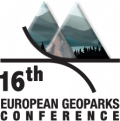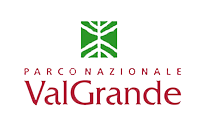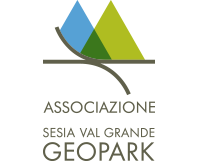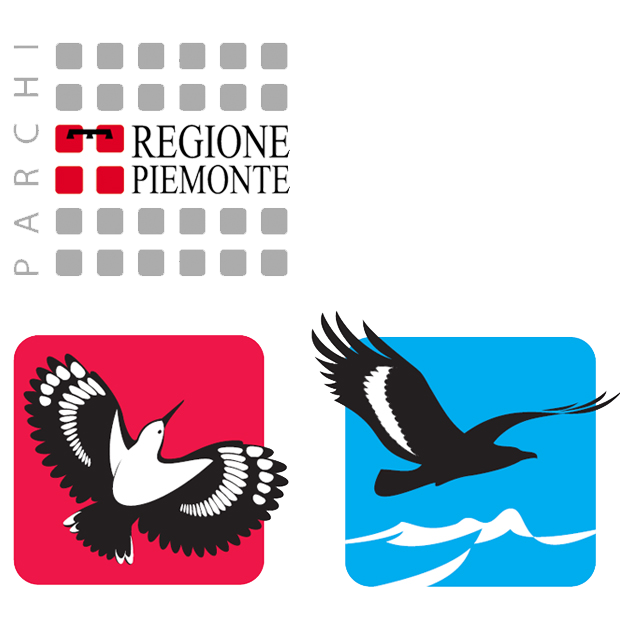- Home
- Places of interest
- Ecomuseums
Ecomuseums
Ecomuseums are institutions that deal with studying, protecting and making known the global collective memory of a geographically bounded community and its historical and current relationship with the environmental resources of the territory.
An ecomuseum is characterized by a deep link with the territory, by the knowledge of the relationships that connects humans to the environment in which they live. Ecomuseums are not museums as we usually understand the term, so they are not enclosed places where objects and finds are placed: they also represent a lifestyle, the economy, work, art and culture that are enmeshed in the relationships between a people and its territory.
ECOMUSEUM OF THE SESIA VALLEY
It was established in 1999 to enhance and protect the historical memory and traditions of the Sesia valley’s material culture, emphasizing the close link between human history and landscape evolution.
The Ecomuseum is divided into:
Ecomuseum of the Walser territory and culture
It includes the villages of Alagna, Riva Valdobbia, Mollia, Rassa, Campertogno, Carcoforo, Rimasco, Rima and Rimella, which bear witness to the history of the Walser people who colonized the upper parts of the valley in the 13th century.
Informatio:http://www.atlvalsesiavercelli.it/ecomuseo_territorio_e_cultura_walser_ing.php
Ecomuseum of the lower Sesia valley "Colli di Seso"
It is based in Valduggia and includes the villages of Valduggia, Cellio and Breia. In this context the rural culture is important with its testimonies, its wealth of art and culture that must be considered and enhanced. Information: http://www.atlvalsesiavercelli.it/ecomuseo_bassa_valsesia_ing.php
ECOMUSEUM OF BIELLESE
The Ecomuseum of Biellese was established by the Piedmont Region on 1 March 2000. It is made up of multiple realities (natural areas, museums, cultural institutions ...) that bear witness to the transformation of the Biella territory, whose history is characterized by the transition from the rural and artisanal economy to one of industrial textiles. It consists of 15 ecomuseum sites and several local cultural institutions; four of these are included in the geopark:
Fabbrica della ruota (Wheel factory) – Pray
An ancient farm that represents one of the best known examples of industrial archeology in Italy
http://cultura.biella.it/on-line/Welcomepage/EcomuseodelBiellese/Celluleeistituzioni/FabbricadellaRuota-Pray.html
Museum-laboratory of the Mortigliengo - Mezzana Mortigliengo
Museum of the rural economy of the territory
http://cultura.biella.it/on-line/Welcomepage/EcomuseodelBiellese/Celluleeistituzioni/MuseoLaboratoriodelMortigliengo-MezzanaMortigliengo.html
The former mill at Susta-Soprana
An ancient mill, one of the few water-based relics to be found in this area
http://cultura.biella.it/on-line/Welcomepage/EcomuseodelBiellese/Celluleeistituzioni/ExMulinoSusta-Soprana.html
Oasi Zegna – Trivero
A private project of protection and enhancement of the mountain territory created and funded by the Ermenegildo Zegna Group
http://cultura.biella.it/on-line/Welcomepage/EcomuseodelBiellese/Celluleeistituzioni/OasiZegna-ValdilanaLoc.Trivero.html
As described on the Ecomuseum website "the ecomuseum cells work for the conservation of documentary heritages, finds, technical practices and socio-cultural models that are at risk of disappearance; they integrate into the Ecomuseum reinterpreting and updating the tradition, with the aim of involving the inhabitants and fostering sustainable local development. Collections of tools and equipment find a place in historic buildings; marked thematic itineraries lead to the discovery of representative places of the communities and return the life and working cycle of the products of the earth and industry. Cultural institutions participate in this project by making available their documentary heritage and their skills.”
Information:
http://cultura.biella.it/on-line/Welcomepage/EcomuseodelBiellese.html
Ecomuseum of Biella, in the Province of Biella - Department of Culture
Via Quintino Sella 12 - 13900 Biella - tel. 015 8480899 - fax 015 8480740 E-mail This email address is being protected from spambots. You need JavaScript enabled to view it.
ECOMUSEUM OF SOAPSTONE AND STONEWORKERS
The ecomuseum of soapstone and stoneworkers (Ecomuseum of leuzerie and scherpelit in the Malesco dialect) was established by the Piedmont Region on 27 March 2007. The ecomuseum itinerary has been developed in the historical centers of Malesco, Finero and Zornasco and reaches the Alpe Straolgio. The Municipality of Malesco has always been linked to stone and to the activities of stoneworkers. Even the surrounding landscape is dominated by the presence of this element, just think of the glacial potholes carved in the rock of the Loana Waterfall (Cascata della Loana), or the deposits of soapstone and marble. Ancient mountain pastures and places of worship testify to the connection that humans have had for a long time with stone and which has been documented since prehistoric times by cupels dug into boulders. Even in architecture, stone is the dominant material used, from walls of houses to roofs, from balconies to eaves.
The whole area is historically linked to the use, in particular, of soapstone: it is an easily workable and exceptionally heat-resistant material, so much so that it becomes fundamental for the production of fireplaces, stoves and typical stone pans, but also for the manufacture of architectural elements.
Among the numerous places that make up the ecomuseum it is worth mentioning the Val Grande National Park Museum, dedicated to soapstone and its many uses. Also interesting are the ancient mill known as Mulin dul Tac and the Historical Wash House.
Information: https://ecomuseomalesco.it/en/
ECOMUSEUM OF THE GRANITE OF MONTORFANO
The ecomuseum of granite involves the territory of Mergozzo and its surroundings, where the shape of Montorfano stands out. In this solitary massif made of white granite, quarrying activities that have been carried out for at least four centuries are evident: the rock is particularly good and compact, suitable for use. The Montorfano massif is part of the so-called "Graniti dei Laghi", formed between approximately 295 and 282 million years ago, in the Permian age.
One of the most beautiful testimonies of the use of this material are the fortifications of the "Cadorna Line" but the presence of humans in this area is known from the Stone Age: some findings dating back to this period are preserved in the Civic Archaeological Museum. Visiting the territory of the Ecomuseum makes it possible to understand how human life has been deeply conditioned by the resources of the territory and how over time, in turn, human have modified it with their activities.
Among the various points of interest, one of the most striking is the village of San Giovanni, built according to the traditional building methods and surrounded by cultivated terraces. Here the church of the same name represents a beautiful testimony to the local Romanesque style.
From: www.ecomuseogranitomontorfano.it
Copyright © 2014 Sesia Val Grande Geopark - Email This email address is being protected from spambots. You need JavaScript enabled to view it.











